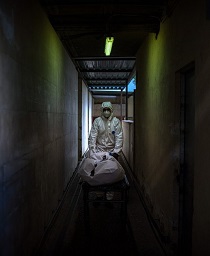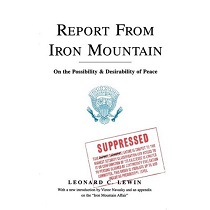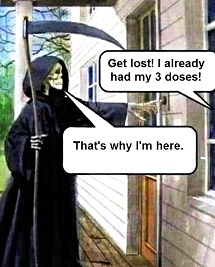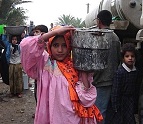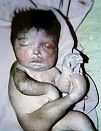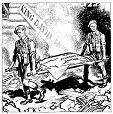Growing Hunger in America
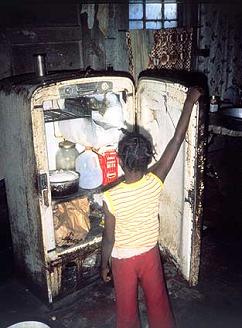
In January 2010, Feeding America (FA, formerly America's Second Harvest) released its disturbing new report on growing hunger titled, "Hunger in America 2010." The Chicago-based organization is the nation's "leading domestic hunger-relief charity," serving the needy "through a nationwide network of member food banks, over 200 in all 50 states, the District of Columbia and Puerto Rico."
Its study is based on interviews with over 62,000 clients served by the FA network, as well as information provided by 37,000 FA agencies - emergency food providers, including food pantries, soup kitchens, and emergency shelters for short-term residents.
FA's system serves an estimated 37 million people annually, up 46% since 2005, including 33.9 million pantry users, 1.8 million kitchen ones, and 1.3 million in shelters.
About 5.7 million people (or 1 in 50) get emergency food aid from the system in any given week, an increase of 27% since 2005, and one in eight Americans (37 million people, including 14 million children and three million seniors) are food insecure, meaning they don't get enough to eat. As a result, they need emergency help from food banks throughout the country. The latest data represent "a staggering 46 percent increase since" FA's 2006 study.
"Indeed, the existence of so many people without secure access to adequate nutritious food represents a serious national concern....More than one in three client households are experiencing very low food security - or hunger - a 54 percent increase" compared to 2006.
FA calls food insecurity "a complex, multifaceted phenomenon that varies along a continuum of successive stages as it becomes more severe." In contrast, food security enables "access by all people at all times to enough food for an active, health life."
FA agencies serve households across America:
-- 38% of their members are children under 18, compared to 36% in 2005;
-- 8% of household members are elderly, down from 10% in 2005;
-- about 40% are white; 34% black; 20% Hispanic; and the remainder from other racial groups;
-- 36% of households include at least one employed adult, the same as in 2005;
-- 71% of households have incomes below the federal poverty level during the month preceding the survey, up from 69% in 2005;
-- median monthly household income decreased by 7% from $825 to $770 in 2009 dollars; and
-- 10% are homeless, compared to 12% in 2005.
Overall, 75% of client households are food insecure (based on the government's food security scale), an increase from 70% in 2005; 39% of households have low food security; 36% very low.
Client households with children are 78% food insecure, up from 73% in 2005. "Many clients report having to choose between food and other necessities:"
-- 46% between food and paying for utilities, including heating oil, up from 42% in 2005;
-- 39% between food and paying rent or mortgages, compared to 35% in 2005;
-- 34% between food and medical care, including drugs, up from 32% in 2005;
-- 35% between food and transportation; and
-- 36% between food and gasoline for a car.
Government-Provided Help
-- 41% of households get Supplemental Nutrition Assistance Program (SNAP) aid, up from 35% in 2005;
-- 54% of households with children aged up to three get Special Supplemental Nutrition Program for Women, Infants, and Children (WIC) help, compared to 51% in 2005; and
-- 62% of households with school-age children participate in federal school lunch programs, unchanged from 2005; 54% participate in school breakfast programs, up from 51% in 2005; 14% participate in the summer food program.
As in 2005, 29% of households report at least one member in poor health. Most clients are grateful for FA help - 92% very or somewhat satisfied and 93% with food quality. The FA network includes about 33,500 food pantries, 4,500 soup kitchens, and 3,600 emergency shelters, up 13% for pantries from 2005, and down 20% for kitchens and shelters.
Faith-based agencies run 72% of pantries, 62% of kitchens, and 39% of shelters. Some also offer other services.
Sources of Food Provided
-- food banks account for 75% of pantry distributions, 50% for kitchens, and 41% for shelters;
-- religious organizations, government, and direct wholesale and retail purchases are other important sources;
-- the Commodity Supplemental Food Program supplies 33% of pantries, 24% of kitchens, and 22% of shelters;
-- The Emergency Food Assistance Program supplies 54% of pantries, 34% of kitchens, and 31% of shelters; and
-- the Emergency Program on Indian Reservations supplies 2% of pantries, 1% of kitchens, and 2% of shelters.
FA's president and CEO, Vicki Escarra said:
"Clearly, the economic recession, resulting in dramatically increasing unemployment nationwide, has driven unprecedented, sharp increases in the need for emergency food assistance and enrollment in federal nutrition programs. Hunger in America 2010 exposes the absolutely tragic reality of just how many people in our nation don't have enough to eat. Millions of our clients are families with children finding themselves in need of food assistance for the very first time. It's morally reprehensible that we live in the wealthiest nation in the world where one in six people are struggling to make choices between food and other basic services."
In November 2009, the US Department of Agriculture's Economic Research Service (USDA) reported that 49 million Americans, including 17 million children, are food insecure; that is, they "had difficulty providing enough food for all their (family) members due to a lack of resources. The prevalence of food insecurity was....the highest observed since nationally representative food security surveys were initiated in 1995."
In September 2009, the US Census Bureau reported rising poverty, falling incomes, and growing numbers of uninsured US households. Even by the Bureau's conservative estimates, 39.8 million Americans were impoverished, the highest level since 1960, and 17.1 million lived in extreme poverty at below one-half the official threshold.
A revised October 2009 Census analysis showed 47.4 million (15.8% of the population, including one-fifth of the elderly) below the poverty line, much higher than the above figure and rising.
The official poverty level for a family of four is $21,203, a way outdated threshold developed over 40 years ago. In 2007, the Economic Policy Institute (EPI) said a family of four in Peoria, IL needed $42,900 to be above poverty. In Chicago, it was $49,000 and in New York nearly $72,000. The same reality exists in large and smaller cities throughout America.
A recent Brookings Institute report titled, "The Effects of the Recession on Child Poverty" was equally disturbing, showing one in five US children under age 18 in families below the official poverty level, based on September 2009 Census data. According to Brookings' Julia Isaacs:
Census 2008 information "lag considerably behind current economic conditions. Job losses and wage reductions occurring in 2009 were obviously not captured. In addition, many adverse events in 2008 were only partially captured."
As a result, current conditions are far worse than reported and will keep deteriorating ahead, for at least several years according to Isaacs. She called the situation "sobering."
It showed in late November when reported food stamp usage was at record levels, and according to a study by Cornell University's Thomas Hirschl and Washington University in St. Louis' Mark Rank, half the children in America will need food stamps at some point in their childhood, 90% for black children.
Despite a growing national crisis, Obama proposed less, not more, saying "our fiscal situation remains unacceptable," not growing poverty, homelessness, hunger and despair at levels not seen since the 1930s.
On February 1, he sent Congress a budget freezing social spending for three years, a de facto cut in real terms. At the same time, he lets Wall Street keep pillaging, plans more wealth transfers to the rich, and proposed the largest ever defense and homeland security budgets, leaving little for cash-strapped states and growing millions of desperate people out of luck and on their own.
___________________________________________________________________________________

Stephen Lendman: I was born in 1934 in Boston, MA. Raised in a modest middle class family, attended public schools, received a BA from Harvard University in 1956 and an MBA from the Wharton School at the University of PA in 1960 following 2 years of obligatory military service in the US Army. Spent the next 6 years as a marketing research analyst for several large US corporations before becoming part of a new small family business in 1967, remaining there until retiring at the end of 1999. Have since devoted my time and efforts to the progressive causes and organizations I support, all involved in working for a more humane and just world for all people everywhere, but especially for the most needy, disadvantaged and oppressed. My efforts since summer 2005 have included writing on a broad range of vital topics ranging from war and peace; social, economic and political equity for all; and justice for all the oppressed peoples of the world like the long-suffering people of Haiti and the Palestinians. Also co-hosting The Global Research News Hour, occasional public talks, and frequent appearances on radio and at times television.
Stephen Lendman is a Research Associate of the Centre for Research on Globalization. He lives in Chicago and can be reached at lendmanstephen@sbcglobal.net. Also visit his blog site sjlendman.blogspot.com and listen to The Lendman News Hour on RepublicBroadcasting.org Monday - Friday at 10AM US Central time for cutting-edge discussions with distinguished guests on world and national issues. All programs are archived for easy listening.
Photo: http://www.american-pictures.com/gallery/usa/book91tr-a.jpg


